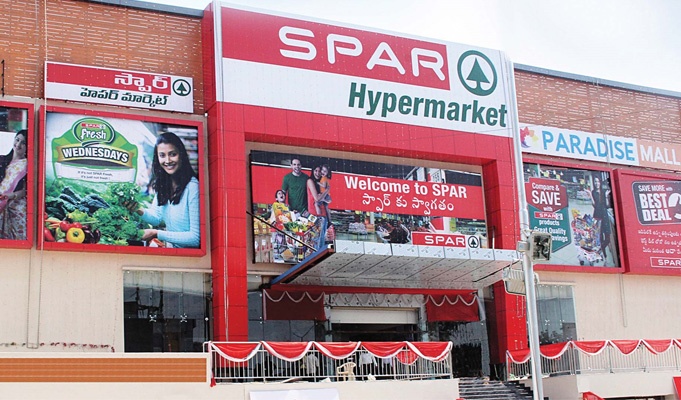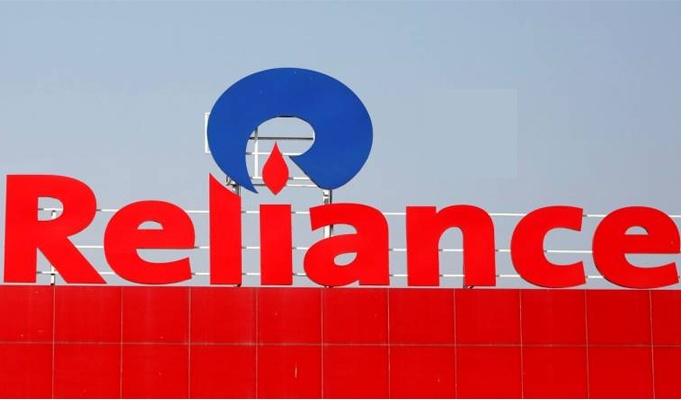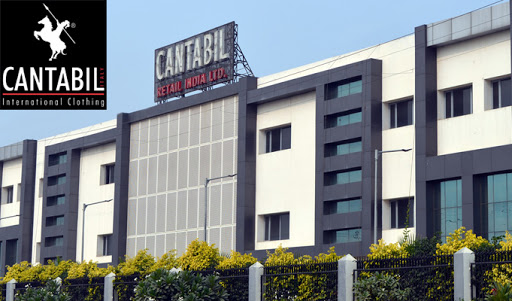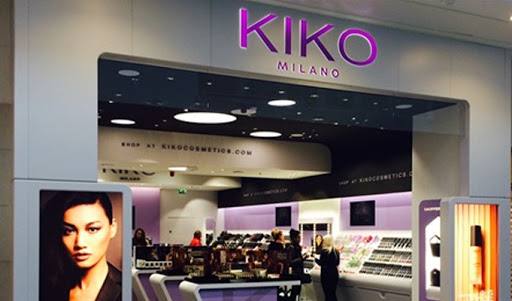Health and wellness is alive and well at food retailers who are taking the lead in establishing their health and wellness programs. Many top retailers are deploying in-store dietitians to help shoppers make informed choices. Apart from rolling out “good for you products,” be it their own or a national brand offerings, retailers are also offering content like healthy recipes and product samples as well as providing menu labels with health information.
According to an industry study, retailers have a big opportunity to enhance their health-and-wellness programming by extending their health and wellness initiatives to shoppers. Overwhelmingly, food retailers see health and wellness programs not only as a business growth opportunity, but also as a way to meet consumer expectations. Grocers understand their value as both a destination and partner in a shopper’s health and wellness journey and according to experts retailers offer an enormous spectrum of health-and-wellness programming, especially around activities that provide more shopper experiences and product assortment.
 “Our primary focus is on value-added products like dry fruits, nuts, spices and all other premium food products associated with health and wellness,” says Sunil Sanklecha, Managing Partner, Nuts ‘n’ Spices. Chennai-based Nuts ‘n’ Spices is a specialty store that sells a large variety of products such as dry fruits, spices, herbs, health products, sugar free products, imported chocolates and biscuits, imported dairy products, imported ice creams, frozen foods and many more gourmet products.
“Our primary focus is on value-added products like dry fruits, nuts, spices and all other premium food products associated with health and wellness,” says Sunil Sanklecha, Managing Partner, Nuts ‘n’ Spices. Chennai-based Nuts ‘n’ Spices is a specialty store that sells a large variety of products such as dry fruits, spices, herbs, health products, sugar free products, imported chocolates and biscuits, imported dairy products, imported ice creams, frozen foods and many more gourmet products.
Dehydrated fruits like kiwi, mango, papaya, pineapple have also been recently added into its product mix. Besides nuts, dry fruits and seeds, Nuts ‘n’ Spices also offers a range of herbs and seasonings such as oregano, basil, thyme, parsley, mixed herbs, etc. The varieties of spice powders and condiments include Kashmir chilly powder, coriander seeds powder, cardamom, clove, cinnamon, nutmeg, among others. The store also stocks syrups and juices from International and Indian brands. From Pringles to Doritos to Mumbai’s sukhi bhel, low calorie namkeens, oil-free papads, mixtures and other diet snacks for the fitness freaks, the store serves as a one stop destination for a whole lot of healthy snacking ideas.
 “The aspiration levels of customers are going through an upward evolution. More and more customers are becoming aware of what they consume and impact of the products they buy on their health and the world. And this is changing the way they look at their lives and what they consume,” opines Rajeev Krishnan, Managing Director and CEO, SPAR Hypermarkets. He adds: “For us health foods are a very promising segment. As a consequence of the sedentary lifestyle most of us lead these days, pursuing an ‘active life’ has become a quest. We identify ourselves as contributing significantly in this space by offering a range of healthy food products and solutions to our shoppers.”
“The aspiration levels of customers are going through an upward evolution. More and more customers are becoming aware of what they consume and impact of the products they buy on their health and the world. And this is changing the way they look at their lives and what they consume,” opines Rajeev Krishnan, Managing Director and CEO, SPAR Hypermarkets. He adds: “For us health foods are a very promising segment. As a consequence of the sedentary lifestyle most of us lead these days, pursuing an ‘active life’ has become a quest. We identify ourselves as contributing significantly in this space by offering a range of healthy food products and solutions to our shoppers.”
SPAR Hypermarkets is taking the health and wellness space very passionately and is looking at enriching the lives of customers by bringing in interactive and innovative ways to educate them on living in a healthier manner. It has been encouraging organic and locally grown products in all its stores across the country. For instance, as part of its program called SPAR Natural Range, the retailer has entered into partnerships with leading healthcare brands and professionals, building a complete program for customers with a health and wellness zone.
This commitment toward health and nutrition has also resulted in the allocation of a dedicated section in the stores called `SPAR Natural’. Within this dedicated zone, SPAR India offers the widest variety of healthy food products or `superfoods’ like millets, herbs, seeds, and nuts. SPAR Natural also promotes organic brands of Indian origin. Organic and natural brands like 24 Mantra, Pure & Sure, Phalada Organics, Organic Tattva, Pronature, Turn Organic, and others are promoted under the SPAR Natural initiative.
 “Today, grocery stores have become both a destination and partner in a shopper’s health and wellness journey. The trend of health and well-being in food retail continues to escalate as an important value and service provided to customers. In the food retail environment, health and wellness is being delivered in a variety of forms from providing access to healthand wellness information, to curating healthy food choices to providing in-store health care services. “The superfoods category is seeing the maximum demand and sales traction at our Foodhall stores. Also, special dietary requirement foods, which include vegan and gluten-free products, are the big trends we are seeing,” says Avni Biyani, the driving force behind Future Retail’s premium lifestyle food superstore Foodhall and its Concept Head.
“Today, grocery stores have become both a destination and partner in a shopper’s health and wellness journey. The trend of health and well-being in food retail continues to escalate as an important value and service provided to customers. In the food retail environment, health and wellness is being delivered in a variety of forms from providing access to healthand wellness information, to curating healthy food choices to providing in-store health care services. “The superfoods category is seeing the maximum demand and sales traction at our Foodhall stores. Also, special dietary requirement foods, which include vegan and gluten-free products, are the big trends we are seeing,” says Avni Biyani, the driving force behind Future Retail’s premium lifestyle food superstore Foodhall and its Concept Head.
Health and wellness is an increasingly essential yet complex driver in consumers’ buying decisions, and retailers must embrace their role as both an advocate for, and supporter of, shoppers’ desire to make better choices, and offer those solutions. But it’s not just fruits and vegetables that can have a positive impact on our health. There are lots of healthful components like antioxidants, fiber, whole grains, and soy, found in a variety of foods and beverages that can make a difference in our health as we age.
Among the top components with health benefits are calcium and vitamin D for bone health, protein and B vitamins for overall well being, omega-3 fatty acids for heart health, and probiotics and fiber for digestive health. Experts opine that despite their growing knowledge of what they should be eating, Indians still struggle to incorporate these key food components into their diets. The top barriers to more frequent consumption are expense, taste and availability, say the experts. However, consuming foods for health benefits doesn’t have to be expensive. Just taking simple steps, such as choosing a whole grain cereal, oatmeal, or yogurt for breakfast each day, can go a long way to improve health over time.
The road ahead for health foods
Food in India is gradually getting fortified with milk being the recent addition to the pool of fortified products. Companies like Nestle are fortifying milk with vitamin D and A to combat common deficiencies. The list of products is expected to expand in the coming years. Going ahead, global resource constraints will lead the industry to explore unconventional avenues to meet the ever growing demand for high nutrition food. Given the limited number of resources for an ever growing population, the healthy consumption segment, specifically foods, will see interesting product innovations through advanced technology in the future. Whereas 3D printing joining the group of kitchen appliances may be a little far in the future, synthetic meat and un-conventional protein will soon be commercially available.
Synthetic or cultured meat means growing muscle tissue from animal stem cells in a lab rather than harvesting from livestock. This will not only reduce the dependency on resources like land, water and energy but also allow the alteration of essential amino acids and fat in addition to adding vitamins, minerals and bioactive compounds. Similarly consumption of various bugs offers higher value of iron, calcium, B12 and Omega apart from higher levels of protein. All this comes with greater sustainability as they breed faster and require less water, feed and land while emitting less greenhouse gases.
As far as manufacturers are concerned, new entrants will stand a fair chance to leverage on consumer awareness, develop acceptability and garner trust. However, this opportunity needs to be catered with the right product and right packaging, which communicates the benefits profoundly to consumers. The recent growth of companies like Organic India, 24 Mantra, etc. reflects consumers’ willingness to move to healthier options at a premium.
On the other hand, organized retailers will continue allocating incremental shelf space to healthier options. Within the standard food categories whose contribution stands at about 10-20% of sales across various retailers, their share will gradually keep increasing.
Second, there will be high growth in certain pure play health and wellness foods categories. While the overall market is growing at 10-11% CAGR, there are many product categories that will keep growing at a much faster clip and will successfully replace the traditional food options due to negative health impacts associated with them. These include green tea (50% plus CAGR), oat based products (15% plus CAGR), etc.
The next few years will see the rise of a larger segment of foods entering the health domain through fortification and improved product personalization. With change in consumption patterns, health conscious individuals (HCIs) are looking for convenience and personalisation. The desire to eat fresh and healthy would be met by healthy meal kits, which are already a huge success in the west. These kits include proportioned healthy and/ or organic ingredients with complete instructions making it easy for one to cook.
How food retailers are building brand differentiation through their health and wellness programs
'F&B is an integral part of Oberoi mall's strategy'
Anuj Arora, General Manager, Oberoi Mall, spoke to FoodService India on what makes it one of the most popular F&B destinations in Mumbai’s western suburbs.
What is your opinion about food and leisure being critical to the success of a shopping destination?
 Traditionally, shopping has always been associated with leisure and fun. A day of shopping is perceived as a day of outing with family and friends; and no such day is complete without a great food experience. Hence, be it the busy marketplaces of olden days or new-age shopping malls, food and leisure have always been an integral part of any shopping destination. The gradual progression of food courts in shopping malls is a testament to this development. From a select few fast-food kiosks of a decade ago to the vast variety of fine-dine options in malls today, food as a part of a Mall’s ecosystem has come a long way.
Traditionally, shopping has always been associated with leisure and fun. A day of shopping is perceived as a day of outing with family and friends; and no such day is complete without a great food experience. Hence, be it the busy marketplaces of olden days or new-age shopping malls, food and leisure have always been an integral part of any shopping destination. The gradual progression of food courts in shopping malls is a testament to this development. From a select few fast-food kiosks of a decade ago to the vast variety of fine-dine options in malls today, food as a part of a Mall’s ecosystem has come a long way.
In fact, many a times, repeat visits to a mall are for a good meal and/or entertainment, and shopping becomes the by-product. ‘Eating out’ has grown exponentially as a segment, and for an average Indian shopper, who is well travelled and is more open to trying out new cuisines, a Mall, with a variety of cuisines on offer, is the perfect dining destination.
In the case of Oberoi Mall, where does the foodservice component fit into the overall scheme of promoting your mall as a complete shopping destination?
Food has been an integral part of our strategy right from the inception of Oberoi Mall. Our vision was to create a family-centric and one-stop destination for fun, food, fashion and films, which would offer the best of all segments to our esteemed patrons. Through the years, we have consciously worked towards getting renowned globally and among Indian F&B brands and Oberoi Mall today is one of the most popular F&B destinations in the western suburbs.
How would you describe the USP of Oberoi Mall as a Food & Beverage destination? What new F&B and dining concepts have been introduced at your mall?
One of Oberoi Mall’s USP is the well-designed Food Court coupled with ambient lighting and seating. The layout, ambience and selection of outlets in the mall is consciously designed in a way to positively engage and encourage our patrons to dine. Standing at any spot in the Food Court, one can easily screen almost all the outlets and then decide their preference – this gives all our F&B partners a fair and equal chance to attract business. Further, our Dessert station (an array of up to 7 kiosks providing unique offerings) is placed in the centre of our Food Court to gently sway our patrons to satiate their sweet cravings post their meals.
We have consciously worked towards becoming the first to launch numerous apparel and fashion brands in India and Mumbai, but have also been the testing ground for many F&B players like Burger King, Taco Bell, Mad Over Donuts and British Brewing Company who opened their first store in Mumbai at Oberoi Mall and also to restaurants and cafes like Olive Bistro, Goregaon Social, Starbucks and Le15 Petit cafe who opened their first store in a Mall at Oberoi Mall. While the sales they clocked at their outlets in Oberoi Mall instilled confidence in them to further expand their presence in Mumbai, we are humbled to learn that their outlet at Oberoi Mall continues to be their best performing outlet in Mumbai.
 What is your strategy for allocating space at your mall to the F&B brands?
What is your strategy for allocating space at your mall to the F&B brands?
Being an efficiently designed Mall, we walk a tightrope in ensuring that we have an F&B mix that caters to the maximum types of palates. Hence, we continuously strive for an optimum F&B mix at Oberoi Mall, which ranges from traditional to modern bistro, fast food to fine dine and desserts to drinks. The entire 3rd floor in our ground plus three storey mall is dedicated to F&B and entertainment. We also have cafes at each floor of the mall to provide our patrons with the option to take a break during their retail therapy.
What policies and programs have you put in place at Oberoi Mall?
When we started, we offered a hand-picked array of food brands that we knew would appeal to a diverse range of customers. With the passing years, we kept on constantly reinventing our food services to ensure that we remain in sync with the evolving food preferences and changing market dynamics. We were probably the first Mall in the city to include high-end restaurants; and some of them still operate in our mall. Today, we have over 30 F&B partners in the mall.
With several commercial and residential buildings in the vicinity, we are the preferred place for business lunches/dinners, Friday night outs, weekend binges and birthday/kitty parties. We have options for the adults as well
as the young and hence are the most preferred destination. Accordingly, we keep organizing various events and food festivals on a regular basis. In fact, recently we had our International Food Fest where we saw almost all our F&B partners offering unique menus and stellar deals specifically at our Mall and it was a huge success with people from across Mumbai coming over to Oberoi Mall to taste the specially curated menus and save big on the deals.
What are the special needs food retailers are looking for when setting up shop inside malls?
Besides the standard infrastructure requirement, one thing food retailers need is a certain predictability in terms of footfalls and spends. They need to be sure that their effort and expenses will bear results and they will be able to run a sustainable business.
Over the years, Oberoi Mall has emerged as a preferred destination for leisure, fashion and lifestyle offerings, resulting in increasing footfalls and spends every year in the mall. This has given the comfort and confidence to our F&B partners to keep reinventing themselves to adapt to the changing palate of our patrons. Consequentially, many of our patrons have shifted their purpose of visit to Oberoi Mall to ‘first eat then shop’ instead of ‘first shop then eat’.
What is share of healthy revenue that developers should look?
It would not be wise to generalize on revenue shares since each F&B offering is unique and it comes with its own set of challenges and opportunities. We, at Oberoi Mall, remain cognizant of this fact when we discuss potential partnerships with our F&B partners.
Reliance’s online grocery store JioMart to take on Grofers, Bigbasket
Reliance Industries, India’s biggest company by market value, has started its web portal JioMart, harnessing the might of its two largest consumer-facing businesses to announce its entry into online food and grocery shopping by early next year, as per reports in leading dailies.
Calling itself “Desh Ki Nayi Dukaan“, JioMart will currently cater to online shoppers in the suburban Mumbai areas of Navi Mumbai, Thane and Kalyan. It will be in direct competition to established online grocers, Grofers and Bigbasket.
The app will connect both lastmile neighbourhood stores and consumers, leveraging data and technology capabilities of Reliance’s telecom business Jio and the cash-and-carry infrastructure of its retailing arm.
JioMart is offering its users options to shop from 50,000-plus grocery products, free home delivery with no minimum order value, no-questions-asked return policy and an express delivery promise.
Reliance Retail aims to connect as many as 30 million neighbourhood stores through the venture, as per billionaire owner, Mukesh Ambani at the company’s annual general meeting in 2019.
AI, sustainable practices to propel fashion retail in new decade
The Indian fashion retail industry has undergone radical changes in the past decade with technology, social media, artificial intelligence and digital commerce finding increasing usage among the consumers across demographics in the country. As the Indian consumer and retailer gear up for more developments in the near future, the 20th India Fashion Forum (IFF) made its debut today in Bengaluru, bringing together experts, professionals, analysts, key decision makers and leaders from across the fashion retail business for a two-day conference from 17-18 December, 2019 to discuss and deliberate on the learnings of the past year, success stories and the way forward.
Organised to discuss the upcoming trends in the Indian fashion retail world that is constantly having new global entrants and innovative products, the 20th IFF agenda includes presentations and panel discussions on the latest trends and insights in clothing segment, sustainable manufacturing, physical retail, apps and much more. ‘Athleisure’, growth of women’s wear, traditional wear, innovation and traceability were deliberated upon during the event.
Some of the key trends shaping the future offline and online retail shopping experience include block chain technology, Augmented Reality, Virtual Reality, pricing cycle optimisation, unified merchandise planning, smart checkout, conversational commerce and visual search. Retail brands must enable stores with Internet of Things (IoT) by using the technology and fitting it to suit individual company needs.
Praveen Mellacheruvu, Business Group Lead, Business Apps, Microsoft said, “In the virtuous cycle of retail, retailers across the world see Internet of Things as a way to enhance the in-store experience to ensure customer data safety, employee safety and better customer experiences. Be it CCTV, smart displays, RFID cards on apparel, smart shelves, smart mirrors or sensors, the vision of retailers must be expanded to develop a digitally connected store for enhanced retail outcomes.”
Welcoming his successor Akhilesh Prasad, President & CEO, Fashion & Lifestyle Business, Reliance Retail, IFF’s Outgoing Chairman Suresh J, MD & CEO, Arvind Brands & Retail, said, “The fashion retail business in the country and across the globe has undergone a radical transformation in the past few years. I cannot think of a better person to take over as IFF Chairman than Akhilesh Prasad who has built a billion dollar fashion brand in the last 3-4 years.”
Indicating positive growth for Indian retail players notwithstanding the presence of global brands in the market, Akhilesh said, “This is a forum for the industry to get together, take stock of the scenario and learn to prepare for the future. Bengaluru has been chosen to host this edition given the city’s legacy of organised retail and I urge the local retail players to support this decision given the city’s pioneering status in fashion, digital commerce and technology space.”
The inaugural panel discussion, led by Bijou Kurien, Strategy Board Member, L Catterton Asia Holdings, sifted through the opportunities and challenges in India as the fastest changing consumer market of the world. The panelists consisted of Akhilesh Prasad; Suresh J; Arun Sirdeshmukh, Head, Amazon Fashion; Ashish Dikshit, MD, Aditya Birla Fashion and Retail; CK Venkataraman, MD, Titan Co. and Mukul Baffna, CEO, Arvind Internet. They spoke at length on what the future promised for India as a global market for fashion.
Highlighting the touch points discussed thus far in the conference, Bijou said, “We have seen the development of data, analytics, artificial intelligence in the fashion business in the recent years. Technology has come to be embedded in our internal operating processes as well as in the customer interface. We are now at a point where we are beginning to see a merger of offline and online retail.”
Akhilesh said, “As far as our brand is concerned, there has been no compromise on our product and the value for our product is relevant anywhere in India. It is a rare brand that has taken a mono-brand strategy for the entire country; our offerings remain the same whether the store is in Bareilly or in Mumbai. The offerings, the format, the brand positioning along with the price as a surprise, continue to help us grow. We offer state-of-the-art western wear designed out of London and manufactured out of China to our consumers in India. We launched Ajio as an experiment in private label. It came right after a few experiments, after which we have managed to grow our turnover by 100% every year because we have unique strategies in place.”
Arun Sirdeshmukh attributed the growth of his company to the new customer category whose growth stands at a staggering 80% in Amazon Fashion. He remarked on the attention given to reasonable price quality equation, convenience of availability, product selection and vernacular digital communication as the top reasons for continued new customers.
Growth in Indian ethnic wear and the growing market of 30-40 million households belonging to the upper middle class category and the burgeoning 100 million middle class households aiming for aspirational brands were discussed as the top near future trends for the fashion business in the country.
Envisaging a steady and bright future for the Indian fashion retail business, Akhilesh remarked that the rich culture and long-standing trading and textile history are the main strengths for the Indian retail economy. “Although resources are limited, most of the changes in the world have happened through innovative thinking. Indians have our native intelligence and an ancient, yet robust civilisation. In the economic history of the world until 1750, India and China had dominated world trade. The West has a vintage of 200-250 years, but I am certain that in the next 50 years, the cycle will change and India and China will again dominate the retail scene.”
He projected the entry of hundreds of global retailers into India in the near future which would, in turn, be an advantage to the domestic players who will always dominate local retail economy. “There will be a lot of changes in the next 10 years, much more since the advent of modern retail in the 1980s. While Indian traditional wear is here to stay, e-commerce is expected to evolve along with modern retail. Retail being the second largest employer in the country, regulations will ensure that employment in this sector is not disrupted. With the field open for global retailers, I am certain that the future holds promise for a mature economy.”
Earlier during the day, Saloni Nangia, President, Technopak, highlighted the market share of women’s wear in India which currently accounts for 38% and projected the overall fashion merchandise to increase in its market share from 13% in 2020 to 18% in 2025. She also projected the growth of high fashion value at affordable value pricing, Next Gen interfaces with virtual trial rooms, magic mirrors, visual and voice search, among other innovations.
‘Athleisure’, a term indicating the merger of casual with fitness wear and blending sports wear with style, was projected to take over the millennials and Gen Z who are the key drivers of this clothing segment. Sumit Chopra, Director Research Analysis, Globaldata, threw insights on this informing that 86% of this consumer segment considered exercise and physical fitness as key to wellbeing and the expansion of fashion specialists into sportswear, social media and celebrity endorsements have been crucial to the popularity of athleisure.
The second panel discussion saw experts discussing on sustainable and environment-friendly manufacturing practices increasingly adopted by international brands such as Levi Strauss & Co, The Woolmark Company, Lenzing and Crea Worldwide to reduce hazardous chemical discharge and make the products biodegradable.
Some of the other other key topics discussed through the day included fashion forecasting, single brand retail chains, decoding the customer journey, reimagining physical retail, profitability in fashion business, etc.
On the occasion, the dignitaries released the 17th edition of ‘India Business of Fashion Report (IBoFR) 2020 Year Book which seeks to foster a circa 2020 understanding of elements that will define innovation and sustainability-led business of fashion in India. This edition also witnessed the launch of ‘Fashion Techway’, a series of fashion retail sessions centered around the relevance of technology in the business.
Interbrand Survey: Best Global Brands 2019
Thirty years ago, we asked ourselves about the nuanced relationship between brand and business performance; ‘How much is a brand worth?’ and ‘How can we track and improve its performance over time?’ Aiming to answer questions of this kind, we built the world’s first accredited brandvaluation methodology…
Forecast 2020: Trends to watch out for in India’s confectionery sector
With Indian consumers looking out for the most fun and enjoyable products, confectionery manufacturers need to innovate with new and novel shapes, textures, flavours and packs. Innovation in these areas remains a key to brand success. However, flavour and pricing have emerged as the most important factors in the category with companies trying to capture audiences and play by the rules of innovation on these fronts. For instance, Perfetti Van Melle India, as a category leader in sugar confectionery, takes great pride in setting up the trends as well as creating more occasions for confectionery consumption.
 The company feels that ‘out of home’ or ‘on the go’ packs are likely to take a large part of teens and adult consuming confectionery products. “In line with the current trends, the Indian consumer would be introduced to newer formats across the jelly and chewy segments. Perfetti Van Melle India foresees the confectionery category to grow on the back of double digit growth in the chewing gums and mints segments. The Eclairs segment will also contribute to accelerate the category growth,” says Rajesh Ramakrishnan, Managing Director, Perfetti Van Melle India.
The company feels that ‘out of home’ or ‘on the go’ packs are likely to take a large part of teens and adult consuming confectionery products. “In line with the current trends, the Indian consumer would be introduced to newer formats across the jelly and chewy segments. Perfetti Van Melle India foresees the confectionery category to grow on the back of double digit growth in the chewing gums and mints segments. The Eclairs segment will also contribute to accelerate the category growth,” says Rajesh Ramakrishnan, Managing Director, Perfetti Van Melle India.
Today, the category is fuelled by the sizeable proportion of young consumers who have adventurous palates and are looking for novel varieties of confectionery products. At the same time, chocolate innovation is increasingly being influenced by a wider variety of other food and drink categories, among them salty snacks, biscuits, and sugar and gum. This means that mainstream brands should be looking to experiment with premium markers such as cocoa content and provenance, as the mass market catches up with high-end producers.
With increasing health awareness levels among consumers, the confectionery sector is expected to witness a growing demand for functional chocolates that are high in nutritional value. Health consciousness has certainly caught the attention of manufacturers, as a result of which the market is seeing cereal bars being introduced, which are currently amongst the fastest growing category in the Indian confectionery market, even as toffees, candies, caramels and nougat continue to record the fastest growth.
 “The growing popularity of natural ingredients, which are free from artificial flavours and preservatives in food is boosting the demand for confectionery products. Manufacturers must therefore position their products as a healthy offering rather than just a gourmet treat, in order to cater to a wider consumer base, says Amit Lohani, MD, Max Foods, and Convenor, Forum of Indian Food Importers. “Consumers are so health-conscious today that they seek health and well being in everything they consume, including confectionery. Now they are demanding sugar-free candies and chocolates. The confectionery segment has been witnessing new product launches and is an important section for any retailer as it targets children, adults, young and old, but I feel that the category requires more visibility and a stronger positioning,” adds Lohani.
“The growing popularity of natural ingredients, which are free from artificial flavours and preservatives in food is boosting the demand for confectionery products. Manufacturers must therefore position their products as a healthy offering rather than just a gourmet treat, in order to cater to a wider consumer base, says Amit Lohani, MD, Max Foods, and Convenor, Forum of Indian Food Importers. “Consumers are so health-conscious today that they seek health and well being in everything they consume, including confectionery. Now they are demanding sugar-free candies and chocolates. The confectionery segment has been witnessing new product launches and is an important section for any retailer as it targets children, adults, young and old, but I feel that the category requires more visibility and a stronger positioning,” adds Lohani.
 Mohit Arora, Director of Kipps Mart, the hugely popular grocery supermarket in Ludhiana, feels that “brands should focus on spending on promoting candies, toffees and chocolates, because this segment remains inactive and lacks attention in comparison to other categories.” Also, for better category management, brands need to go beyond in-store branding and cash in on opportunities to partner with like-minded retailers. “We will continue to take initiatives in collaborating with forward thinking retailers to build the confectionery category with sustainable growth and by sharing our global learnings in shopper research, category insights and the understanding of upcoming consumer trends,” states Perfetti’s Ramakrishnan.
Mohit Arora, Director of Kipps Mart, the hugely popular grocery supermarket in Ludhiana, feels that “brands should focus on spending on promoting candies, toffees and chocolates, because this segment remains inactive and lacks attention in comparison to other categories.” Also, for better category management, brands need to go beyond in-store branding and cash in on opportunities to partner with like-minded retailers. “We will continue to take initiatives in collaborating with forward thinking retailers to build the confectionery category with sustainable growth and by sharing our global learnings in shopper research, category insights and the understanding of upcoming consumer trends,” states Perfetti’s Ramakrishnan.
Going forward, confectionery players will keep trying different formats as well as keep up the momentum on taste sampling in their product development process. Category leaders and newer players who want to grab a bigger share of the consumer wallet will have to keep innovation at the core of their product conceptualising and manufacturing to come up with iconic brands and products.
Cantabil eyes 400 outlets in one year, to invest Rs 25 cr
Apparel brand Cantabil Retail India plans to expand its presence across the country by raising in one year the number of outlets to 400 from 290 and invest Rs 25 crore in tier I and II cities.
“2019 has been a positive year and we are hopeful to continue with the same growth momentum in the coming year. There is a significant increase in awareness about the fashion trend among the people in smaller towns and cities. We see immense potential in tier II and III markets for expansion,” said Deepak Bansal, Director, Cantabil.
The company was looking to offer the best of fashion and quality, Cantabil said in a statement. “Our target states are Maharashtra, Gujarat, Rajasthan, UP, Madhya Pradesh, Bihar, Jharkhand, West Bengal and part of Northeast,” it said. The company is present in 16 states.
As per the statement, the company, which clocked Rs 289 crore revenue in 2018-19, is eyeing 30 per cent growth in this financial year.
Kiko Milano plans retail expansion in India in 2020
Italian professional cosmetics brand Kiko Milano has planned to expand its retail presence in India next year through its exclusive brand outlets, including two new stores in the national capital.
“We will focus on having more point of sales, whether it’s exclusive outlets, online or shop-in-shop. We have two more outlets coming up in Delhi, and one each in Lucknow, Mumbai, Guwahati (the first in northeast India), and Kolkata,” Abhishek Bhattacharya, Country Director, Kiko Milano told IANSlife on Saturday.
He was speaking on the sidelines of the launch of its new retail outlet in Vegas Mall, Dwarka, which is its fifth store in Delhi and 11th in India.
“Initially we thought of opening just the retail stores, but we have understood that in Indian market, it has to be a mix of retail and other modes of expansion. We have our shop-in-shop (SIS) concept, and we are also going to tie with more departmental stores, in addition to exclusive brand outlets,” he added.
The Dwarka outlet is the brand’s foray into West Delhi, and houses its latest collections such as Sicilian notes and Pop revolution, along with its sought-after make-up product lines.
Kiko Milano was founded in 1997 in Milan, Italy.
67 pc say AI use can increase sales by online retailers: Survey
When it comes to technologies like automation and Artificial Intelligence (AI), 67 per cent people say the prospect of AI being used to increase sales and profits by online retailers, if that use resulted in a better customer experience, said a new survey on Wednesday.
Software giant Adobe, along with YouGov surveyed over 7,000 respondents from various markets in JAPAC region including India, Australia, China, Malaysia, Thailand and Singapore to provide online retailers with key insights around the purchasing preferences of modern-day customers.
“As personalisation becomes vital towards unlocking the customer experiences of the future, there is a growing need for brands to augment and deepen customers’ end to end engagement journey across the spectrum, and make it more meaningful and appealing for long term engagement,” Nicholas Kontopoulos, Head of APAC Digital Experience Commercial Marketing, Adobe, said in a statement.
According to the software major, 56 per cent people are more likely to buy from retailers using AI capabilities as long as they offer low prices, excellent customer service and online experience.
Titled “Listen: A Magento Meaningful CX Series”, the survey underpins the ever-increasing importance of customer experiences for brands looking to stay ahead in the hyper competitive online retail space.
Further, almost one-third the consumers or 31 per cent respondents said they were happy to get product suggestions
basis their search history — underlining the growing need for personalisation.
Meanwhile, for online retailers, it’s no longer a simple case of bricks vs clicks anymore. While price remains a
key determinant, the study suggests that online retailers need to focus on developing seamless, enriching customer experience strategies to engage modern customers.
Fifty one per cent of the surveyed customers said it’s important for websites to work well on smartphones.
Underscoring the importance of accessibility, half the consumers (50 per cent) said they would choose to buy from a retailer if their website is easy to use and navigate while 47 per cent would do so if it loads quickly.
Almost half (46 per cent) of Indian customers prefer engaging with a retailer online for the second time if loyalty schemes are extended — this is only behind Singapore (53 per cent) in the entire APAC region.
E-commerce norms flouted despite Amazon India tweaking ownership
The Indian e-commerce market is expected to reach $200 billion by 2026 from the current $48.5 billion (as of 2018) and to create a level-playing field for small and medium players, the government brought in a new e-commerce policy and fresh rules around FDI in the sector in February this year that forced online marketplaces like Amazon India to change its ownership pattern in local partners like Cloudtail and Appario Retail.
However, this has not stopped anti-market “predatory pricing” and “deep discounting” practices as violations of the e-commerce norms continued during the year, especially in the festive season, allege traders’ bodies who intensified the protest against deep discounts and disruptive offers by e-commerce majors Amazon and Flipkart by organising a day-long hunger strike in several parts of the country on December 27.
“We want Indian e-commerce market free from all glitches, unhealthy and unfair business practices, and till the government takes any action, our national agitation will continue,” said Praveen Khandelwal, Secretary General of the Confederation of All India Traders (CAIT).
In order to comply with stringent e-commerce regulations, Amazon.com has already sold much of its stake in its desi partner Cloudtail, a joint venture between the Jeff Bezos’ behemoth and software major Infosys founder N.R. Narayana Murthy’s Catamaran Ventures.
Amazon sold 25 per cent of its shares to Prione Business Services Pvt, a company run by Catamaran.
According to media reports, Prione now owns 76 per cent of the venture and the remaining 24 per cent is reportedly owned by Amazon Asia-Pacific Resources Ltd, a non-Indian arm of the US retailer. Thus, Cloudtail technically is no more an Amazon company and is eligible to sell on the marketplace.
Catamaran is now being headed by ex-Infosys CFO Ranganath Mavinakere, Murthy’s all-time favourite.
On the other hand, Appario Retail is a wholly-owned subsidiary of the joint venture between Amazon India Ltd and Ashok Patni, the co-founder of Patni Computer Systems.
But it is Cloudtail that is profit-making venture for Amazon in the country, fulfilling over 25 per cent of all Amazon India orders.
Cloudtail India reported a revenue growth of 25 per cent to Rs 8,945 crore in the previous financial year.
According to media reports, while Amazon has over four lakh registered sellers, Cloudtail and Appario alone account for around 50 per cent of the sales.
Walmart-owned Flipkart has not been impacted much as it has significantly reduced its dependency on vendors.
According to Prabhu Ram, Head, Industry Intelligence Group (IIG), CMR, “The beneficiaries of the new e-commerce policy would potentially be small and bespoke e-commerce players, who could benefit from the level-playing field that the policy aims to provide.”
However, according to the traders’ body, the online platforms are indulging in preferential seller system and more than 80 per cent of their sales are made by just their 10-15 preferred sellers.
In a recent letter written to Prime Minister Narendra Modi, CAIT said the anti-market practices followed by the e-commerce players have created an uneven playing field, unfair and unethical competition, thus destabilising the overall retail trade.
Amazon India, however, discarded the allegations of deep discounting and predatory pricing.
“Amazon is a 100 per cent pure marketplace in India. Sellers set the prices on their own. We do not interfere there at all,” Gopal Pillai, Vice President, Seller Services, Amazon India, told IANS in an interview earlier this month.
Following the complaints, the Department for Promotion of Industry and Internal Trade (DPIIT) sent a questionnaire to Amazon and Flipkart over their adherence to the FDI norms.
The All India Online Vendors Association (AIOVA) has also filed a petition with anti-trust regulator the Competition Commission of India (CCI), alleging that the Amazon India favours merchants that are its subsidiary, such as Cloudtail and Appario.
AIOVA, which represents more than 3,500 online sellers, reportedly said that large sellers such as Cloudtail and Appario are being given preferential treatment by charging significantly less than Amazon’s advertised rates for other sellers.
Earlier this month, the government made it mandatory for e-commerce firms to submit FDI policy compliance report by statutory auditor by September 30 every year.
The e-commerce companies have to obtain statutory auditor report by September-end for the preceding financial year, the government said in a notification, hoping that the move will help ensure compliance of the FDI policy in the e-commerce sector in 2020.












